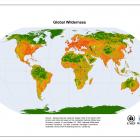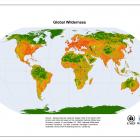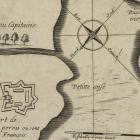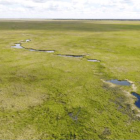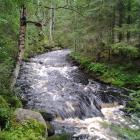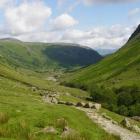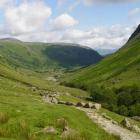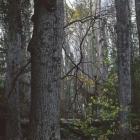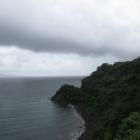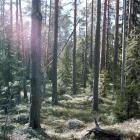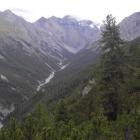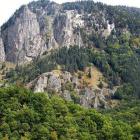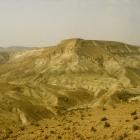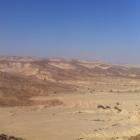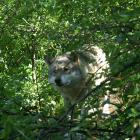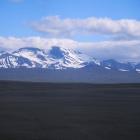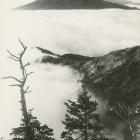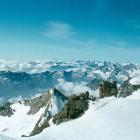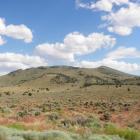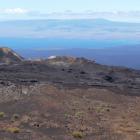Wilderness—England’s English
The particular history of the British Isles means that it is not possible to separate an English idea of “wilderness” from that of Scotland, Wales, or Ireland. The Scottish clearances and the terrible toll of famine and emigration in Ireland in the nineteenth century not only emptied rural landscapes of people, but also reflected, and in turn contributed to, an essentially English romantic idea of wilderness. Within England itself, the idea of wilderness has evolved over time. The oldest meaning, drawing from the medieval Middle English word for “wild,” refers to land beyond the settled, farmed landscape, perhaps containing wild beasts or even wild men, land we might describe as semi-natural. Therefore wilderness was hazardous, lawless. The vast Royal Forests (many of them mostly consisting of open ground), set aside for hunting and subject to their own laws to protect game, were perhaps wildernesses: the remembered and retold story of Robin Hood epitomizes the mixture of threat and romance in a tale of masterless men opposing the corrupt rule of the state, although many current depictions of the landscape of Sherwood Forest reflect suburban Hollywood’s imagination rather than English landscape history. Later commentators on the English countryside like Daniel Defoe and William Cobbett in the eighteenth century continued to speak of land beyond the reach of the improver, although they spoke not of “wilderness,” but of “waste,” land allowed to languish.

Grains Gill, Seathwaite, Lake District, England. Photograph by Bill Adams, n.d.
Grains Gill, Seathwaite, Lake District, England. Photograph by Bill Adams, n.d.
 This work is licensed under a Creative Commons Attribution-NonCommercial-ShareAlike 3.0 Unported License.
This work is licensed under a Creative Commons Attribution-NonCommercial-ShareAlike 3.0 Unported License.
With the Romantic Movement, inspired by English writers like Ruskin and Wordsworth, this dismissal of wild land changed dramatically. Now the stark wildness of nature became something valued, as was its emptiness and its lack of human presence (or rather, only the presence of dominated people living a traditional mode of life). Mountain landscapes especially offered a glimpse of the sublime for Victorian tourists and alpinists, a contrast to burgeoning industrial towns and the gathering onrush of modernity. This was the era when English romantic ideas of the wilderness of the Scottish highlands and its sparse but doughty tartan-clad inhabitants took hold.
In the twentieth century, open hill landscapes were central to the long campaign for national parks before World War II. Advocates argued that such parks were needed for the health and well-being of poor urban factory workers. But the word “wilderness” was not central to this movement: the hills were places of nature, but also places of people. Ramblers engaged in mass acts of trespassing on private shooting estates in the Peak District in the 1930s, demanding right of public access on unenclosed land. All but one of the national parks created after 1949 were in the uplands (including the Lake District so beloved by Wordsworth, as well as the Peak District). Land in these parks remained private, rather than being acquired by the state, but was managed to harmonize economic use, recreation, and natural beauty. Access for citizens to other open land was only obtained when the Countryside and Rights of Way Act was passed in 2000. By that time, the value of wild country underpinned the hugely popular activities of mountain and hill walking, although for many English people the best and wildest landscapes remained hills of Scotland and Wales. However, while walkers might speak of the wildness of mountains, in the crowded country of England, it was impossible to imagine a landscape empty of people and free of human influence. Land might look wild, and if managed appropriately, even feel wild, but was this ever more than an illusion, a reflection of clever park management? In the twenty-first century, the idea of “rewilding” gained ground. English conservationists began to talk about restoring nature, and about its capacity for self-direction. People now speak of the value of “self-willed land,” where the non-human agency of nature has free reign, in and around human society, but not subject to its will.
In the twenty-first century, “wilderness” might not exist in England, but “wildness” does, and is widely held to be precious.
What does wilderness mean in your language? Browse “Wilderness Babel” via the map.
Live map showing the location of the languages featured in the virtual exhibition. What does wilderness mean in your language? Browse “Wilderness Babel” via the map.
- Bate, Jonathan. Romantic Ecology: Wordsworth and the Environmental Tradition. London: Routledge, 1991.
- Bunce, Michael. The Countryside Ideal: Anglo-American Images of Landscape. London: Routledge, 1994.
- McFarlane, Robert. Mountains of the Mind: A History of a Fascination. London: Granta Books, 2003.
- Schama, Simon. Landscape and Memory. London: HarperCollins, 1995.
- Sheail, John. Nature's Spectacle: The World's First National Parks and Protected Places. London: Earthscan, 2010.
- Shoard, Marion. This Land is Our Land. London: Grafton Books, 1987.
- Wainwright, Alfred. Pictorial Guides to the Lakeland Fells. Eastern Fells: 1. London: Reprinted Frances Lincoln, 2005 [1955].



